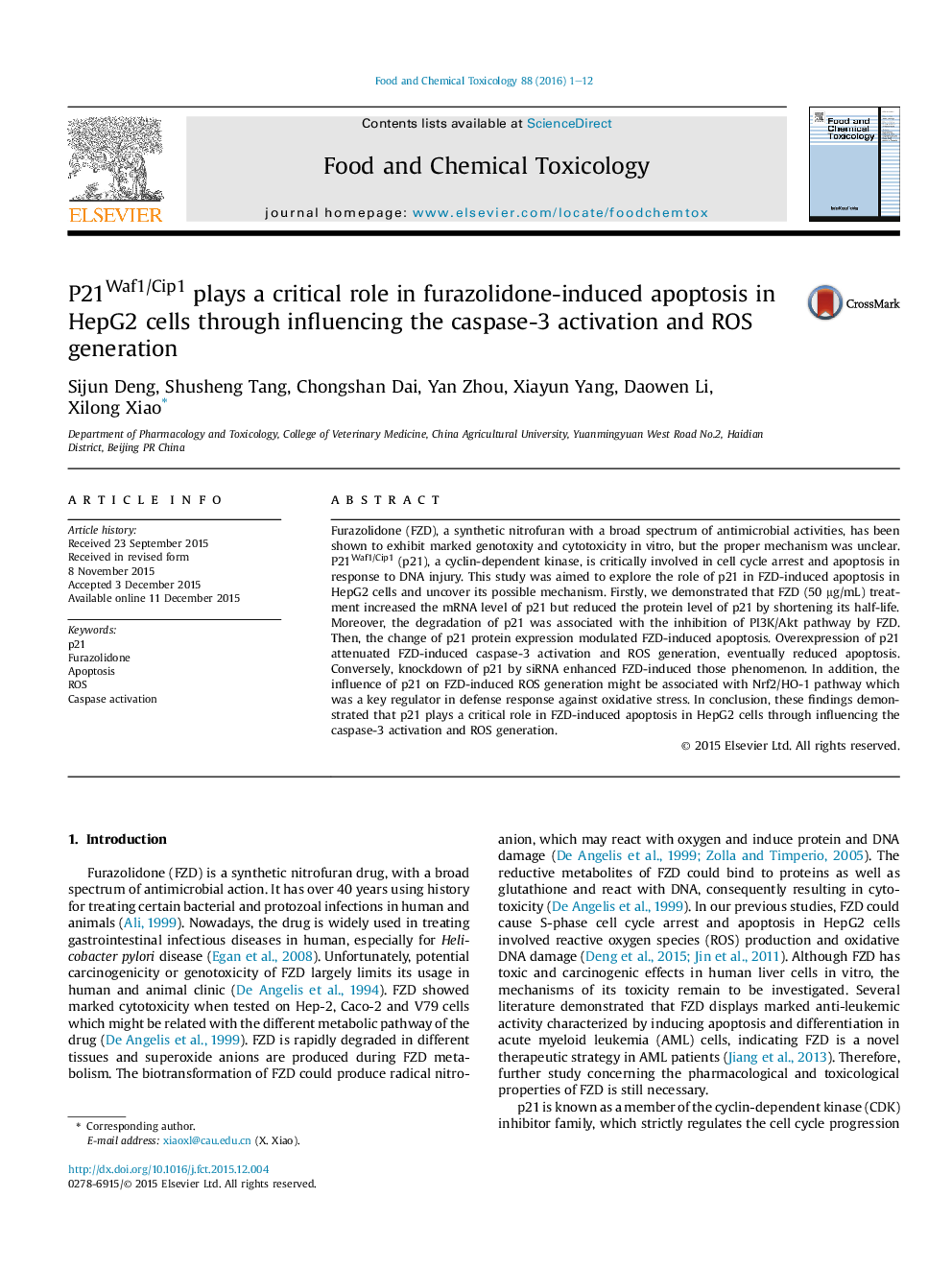| Article ID | Journal | Published Year | Pages | File Type |
|---|---|---|---|---|
| 5849425 | Food and Chemical Toxicology | 2016 | 12 Pages |
Abstract
Furazolidone (FZD), a synthetic nitrofuran with a broad spectrum of antimicrobial activities, has been shown to exhibit marked genotoxity and cytotoxicity in vitro, but the proper mechanism was unclear. P21Waf1/Cip1 (p21), a cyclin-dependent kinase, is critically involved in cell cycle arrest and apoptosis in response to DNA injury. This study was aimed to explore the role of p21 in FZD-induced apoptosis in HepG2 cells and uncover its possible mechanism. Firstly, we demonstrated that FZD (50 μg/mL) treatment increased the mRNA level of p21 but reduced the protein level of p21 by shortening its half-life. Moreover, the degradation of p21 was associated with the inhibition of PI3K/Akt pathway by FZD. Then, the change of p21 protein expression modulated FZD-induced apoptosis. Overexpression of p21 attenuated FZD-induced caspase-3 activation and ROS generation, eventually reduced apoptosis. Conversely, knockdown of p21 by siRNA enhanced FZD-induced those phenomenon. In addition, the influence of p21 on FZD-induced ROS generation might be associated with Nrf2/HO-1 pathway which was a key regulator in defense response against oxidative stress. In conclusion, these findings demonstrated that p21 plays a critical role in FZD-induced apoptosis in HepG2 cells through influencing the caspase-3 activation and ROS generation.
Related Topics
Life Sciences
Agricultural and Biological Sciences
Food Science
Authors
Sijun Deng, Shusheng Tang, Chongshan Dai, Yan Zhou, Xiayun Yang, Daowen Li, Xilong Xiao,
